Votre e-mail
Newsletter : m'abonner
Archive
8 > 9 Avr. 2014
19H / 16H
Cooperative
Screenings and round table discussions
A programme by Raphaël Grisey
The artist Raphaël Grisey invites us to reconstitute an historical, political and cinematographic kinship, by relaying the adventure of the Malian agricultural collective “Somankidi Coura” and thanks to a program that associates archival materials and films from several generations of filmmakers who, like Sidney Sokhona, view the cinema as a tool for struggle and awareness. Two days of screenings and round tables in the presence of Raphaël Grisey (artist), Bouba Touré (photographer and video filmmaker), Tobias Hering (curator of the program “Living Archive” at the Arsenal in Berlin) and their guests.
Free entry
Reserver
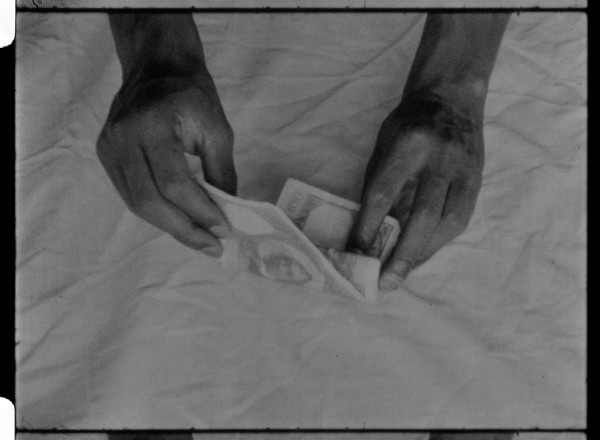
© Sidney Sokhona, Nationalité Immigré
In the mid-1970s, a small political group made up of members of the West African diaspora living in Paris decided to turn their backs on factory work in order to train with French farmers and form the cooperative “Somankidi Coura” in Mali. The director Sidney Sokhona made a fictional and group film on this subject, in which the real protagonists play the principal roles. One of the central figures is the politically committed photographer and filmmaker Bouba Touré. A generation later, with his video Coopérative (2008), Raphaël Grisey reconsiders this tale of self-empowerment and image production.
Tuesday April 8
19h00 : Presentation of the two-day program and screenings of excerpts of films by Bouba Touré and Raphaël Grisey
20h30 : Nationalité : Immigré by Sidney Sokhona (1976, 69min)
With Nationalité : Immigré, Sidney Sokhona introduces a new tone in the cinema of the African diaspora: powerfully confident, explicitly political and radically critical of all forms of discrimination against immigrants—in particular the paternalism of the French left.
Wednesday April 9
16h00 : Safrana ou le droit à la parole (Safrana or the right to speak) by Sidney Sokhona (1978, 99min)
Four African immigrant workers—one of them played by Bouba Touré—decide to leave Paris to train with farmers in the French countryside and then attempt a professional reinsertion in their country of origin. In the bus that takes them to the farms, they evoke their Parisian experiences: the miseries and derision that are the daily lot of the immigrant. With nothing to lose by leaving Paris, they hope that what they learn will prove useful when they return to their homeland.
18h00-20h00: Round table (With: Raphaël Grisey, Bouba Touré, Tobias Hering, Aïssatou Mbodj and others to be confirmed)
20h30: Projections
Super 8 Archives from the collection of the Somankidi Coura Cooperative
Bouba Touré, 58 rue Trousseau, 75011 Paris France by Bouba Touré (2008, 29min)
The video Bouba Touré, 58 rue Trousseau, 75011 Paris France, was filmed in Bouba Touré’s Parisian two-room apartment, whose walls are covered with a great number of photographs, posters and souvenir objects. The video, filmed in two takes, is driven by these images on the walls. Touré links many political struggles of the last 50 years with his own life, showing and making references to the pictures. The narration finds its rhythm and manner of speaking through the repetition of certain phrases.
Coopérative, by Raphaël Grisey (2008, 76 min)
Side by side, two images. What is the reason for this division, this “split” screen? Without a doubt, one reason is the narrative itself. A group of former workers, all immigrants from West Africa, decide to return to Mali in 1976 to create a cooperative. First division: France, on the one hand (of which we see photographs culled from the archives of Bouba Touré, but also, slides of Africa projected in France) and Mali, on the other. Second division: in Mali, the men had to ensure that there was water, bringing it from point A to B: there are numerous images showing the installation of this flow of water, destined to link the river to the earth, life to life. Each shot, on both sides of the screen, is sufficient in and of itself, of course, and none of them lack descriptive precision, or internal dialectic (…), not to mention formal exactness. But the force of the images is doubled in this face to face, for a dialogue is initiated and its rules are always changing. Raphaël Grisey’s ambition is to invite us to experience movement, the decentralization from one image to the next, one context to the next, one action to the next and to the mobile adjustment of our interpretations. Faithful to the subtle spirit of these earlier films, he offers us an extremely rare portrait of Africa. Jean-Pierre Rehm
In collaboration with the Cinémathèque Afrique de l’Institut Français
![]()
Events
Phantom
Structure soutenue par Khiasma dédié à l’accompagnement de résidences cinématographiques et audiovisuelles.

Khiasma is supported by:
La Région Île-de-France
Le Département de la
Seine-Saint-Denis
La DRAC Île-de-France
La Ville des Lilas
La Ville de Paris
La Mairie du 20è
Paris Habitat
La Fondation de France
Khiasma est membre du réseau TRAM et partenaire de Paris-Art.
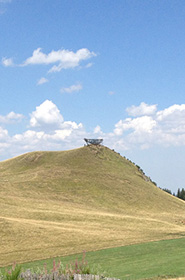
21.06.2016
«Tentative d'évasion» by Vincent Chevillon on the massif du Sancy
As part of the Horizons programme, Vincent Chevillon’s monumental work Tentative d’évasion is installed until late September on the massif du Sancy, in Auvergne (http://www.horizons-sancy.com/).
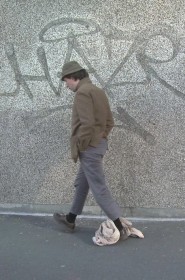
11.04.2016
« De commencements en commencements » reçoit l'aide du film court de la Seine-Saint-Denis
Le film de Simon Quéheillard, De commencements en commencements, vient de recevoir l’aide au film court du département de la Seine-Saint-Denis. Après une belle post-production, une avant-première de cet hommage au burlesque arrivera très bientôt sur les écrans lilasiens !
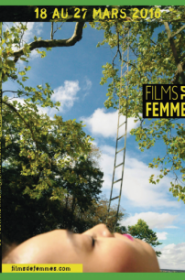
28.03.2016
Alice Diop's "Vers la tendresse" wins Creteil women's film festival award
Developed during an artist’s residency at Khiasma, Alice Diop’s film Vers la tendresse won two prizes at the Créteil Festival du film de femmes. Congratulations !
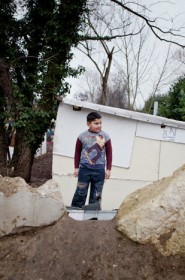
17.03.2014
Lettre au Maire de Grigny
« L’ambassade du PEROU à Ris-Orangis est un repère – un espace visible – et un observatoire – un lieu qui regarde -. Décrire ce qui a lieu dans un bidonville situé sur le territoire européen, telle est l’ambition de ce blog. Exactement, il s’agit de décrire l’humanité qui a lieu, l’humanité qui fait lieu » (décembre 2012). Le 3 avril 2013, tout a été détruit, sauf l’essentiel. A Grigny, où vivent aujourd’hui les familles, nous continuons d’œuvrer pour que l’on construise enfin.
Découvrez ici, la dernière lettre de Sébastien Thiéry, coordinateur du PEROU, au Maire de Grigny. Une invitation au dialogue sur le devenir des familles de Roms présentes dans le bidonville.
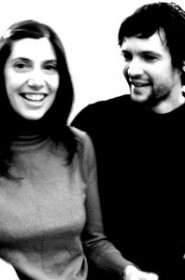
19.12.2013
Butler & Mirza shorlisted for Art Mundi 6 prize !
Félicitations à Butler&Mirza pour leur pré-sélection pour le prix Art Mundi 6. On leur souhaite de tout cœur de le remporter pour mener à bien tous leurs projets et nous surprendre encore.
Rapellons que le duo d’artiste avait exposé leur oeuvre Hold Your Ground à Khiasma, dans le cadre de notre exposition de rentrée, Rendez-vous : sortie de mon corps.
Plus d’informations ici !
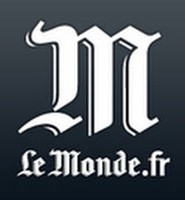
28.11.2013
Notre cycle POSSESSIONS s'installe sur le blog du Monde
En place depuis le 12 novembre 2013, notre cycle Possessions a fait parler de lui dans les pages du blog du Monde. Sous la plume d’Isabelle Regnier, découvrez, ou redécouvrez l’identité de cet évènement qui déplace le genre documentaire, entre projections et performances.
Pour découvrir l’article, c’est ici
Et pour suivre le déroulement de notre programmation jusqu’au 12 décembre, c’est là !
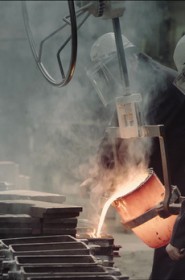
28.11.2013
Mathieu K. Abonnenc à Beaubourg
« An Italian Film (Africa Addio) » de Mathieu K Abonnenc sera projeté demain au Centre Pompidou dans le cadre d’une séance du Peuple qui manque. Rappelons que l’artiste présente également sa vidéo dans le cadre de notre exposition « Rendez-vous : sortie de mon corps » et qu’elle reste visible jusqu’au 12 décembre 2013. La caméra Red utilisée pour le tournage confère une qualité exceptionnelle à l’image qui vient renforcer le propos percutant du film. En ce concentrant sur le cuivre, qui fut l’une des causes de la guerre de Sécession au Katanga, et, auparavant, la raison de l’intérêt des Occidentaux pour la R.D.C, l’artiste reconstitue un épisode de l’histoire du capitalisme et de ses mécanismes, montrant les effets de l’industrialisation par des nations européennes sur des pays et des populations colonisés. http://www.lepeuplequimanque.org/thousand/27-11-13

15.11.2013
Nos artistes hors les murs !
Jusqu’au 12 décembre 2013, Khiasma accueille en son sein l’exposition collective « Rendez-vous : sortie de mon corps ». À cette occasion, Hicham Benohoud, photographe, expose « Version soft » une série de 5 images qui présentent calmement et fermement son malaise face à sa situation, à sa culture, et à son pays. Mais en parallèle, l’artiste expose également à Casablanca « Ânes situ », une série de photographies qui fait écho au statut de l’homme au Maroc.
À découvrir ici !
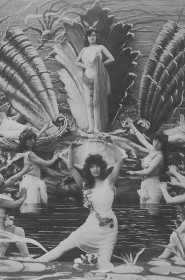
05.11.2013
Mon voisin est un artiste
En lieu et place du traditionnel C’est dimanche ! – le cinégoûter organisé à l’Espace Khiasma chaque dernier dimanche du mois – Fantazio se propose de créer un habillage musical interactif à partir d’un montage de films muets.
« On part de rien. Un son arrive : on peut se coincer dedans, se prendre les pieds dedans, mourir dedans tout de suite. Si un deuxième son sur lequel on pourrait se reposer ne surgit pas, tout s’arrête. Plus de transformation possible. L’improvisation ne peut pas vivre sans entraide. En situation de guerre, d’urgence, de panique, soit on reste pétrifié passif, soit on improvise : on prend en main la situation, on se mouille, on laisse de côté à la minute la force rongeante du regard sur soi. »
Dimanche 23 novembre 2013 à 16H00
Espace Khiasma, 15 rue Chassagnole, 93260 Les Lilas
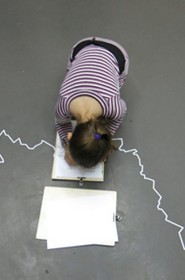
06.08.2013
Le cri de la fougère
Depuis janvier 2013, Hélène Coeur, Célio Paillard et Frédéric Mathevet mènent un atelier sonore dans le quartier des Fougères (Paris 20e), avec une classe de CE2-CM1 de l’école Le Vau. Au cours de cette première année d’ateliers, les participants apprennent à «écouter et jouer leur quartier », faisant travailler leurs oreilles mais aussi leur corps et leur imagination. Une expérience mise en récit par les artistes sous la forme d’un feuilleton dessiné. Découvrez au format pdf :
Episode 1 : Le cri de la Fougère
Découvrez la présentation de l’atelier sur le site de L’Autre Musique
Un projet soutenu par la Fondation de France.
Rubriques
Contenus
- Ismaïl Bahri
- Marc Perrin
- Frank Smith
- Jean-Philippe Cazier
- Emmanuel Adely
- Arno Bertina
- Alexis Fichet
- Nicolas Richard
- Matthieu Dibelius
- Céline Ahond
- Jean-Paul Curnier
- Maïder Fortuné
- Vanessa Place
- Luce Goutelle
- Charlotte Imbault
- Belleville en vu(e)s
- Guillaume Désange
- Yves Robert
- Fantazio
- Souleymane Mbodj
- Hélène Coeur
- Till Roeskens
- Violaine Lochu
- Nathalie Quintane
- David Haddad
- Fiona McMahon
- Geneviève Cohen-Cheminet
- Natacha Pugnet
- Vincent Chevillon
- Jocelyn Bonnerave
- Louis Henderson
- Jérémy Gravayat
- Ana Vaz
- Fabrizio Terranova
- Pierre Michelon
- Simon Quéheillard
- Fréd
- Frédéric Dumond
- Alexander Schellow
- Penny Siopis
- John Akomfrah
- Catherine Poncin
- Aliocha Imhoff & Kantuta Quirós
- Silvia Maglioni & Graeme Thomson
- Julien Prévieux
- Claire Malrieux
- Thomas Lasbouygues
- Dominique Lebrun
- Alice Diop
- Frédéric Nauczyciel
- Françoise Vergès
- Julien Creuzet
- Carlos Casas
- Barbara Manzetti
- Frédéric Mathevet
- Dorothée Smith
- Charles Robinson
- Sylvain Pattieu
- Estefania Penafiel Loaiza
- Filipa César
- Garance Clavel
- Master Création littéraire Paris 8
- Kodwo Eshun
- Pauline Curnier Jardin
- Younes Rahmoun
- Franck Leibovici
- Matthieu K. Abonnenc
- Katia Kameli
- Liv Schulman
- Vincent Meessen
- Badr El Hammami
- François Daireaux
- Smith
- D' de Kabal
- Ragnhild May & Kristoffer Raasted
- 11h Jeanne
- Marie Bouts
- Milena Gilabert
- Lionel Ruffel
- Elitza Gueorguieva
- David Legrand
- Emmanuelle Chérel
- Eric Arlix
- Valérie Pihet
- Émilie Hermant
- Elsa Wolliaston
- Lotte Ardnt
- Erik Bullot
- Corinne Dardé
- Patrick Fontana
- Franck Smith
- Ravi Agarwal
- Olivia Molnar
- Animation Research Group
- João Vieira Torres
- Marie Preston
- ExposerPublier
- Martin Le Chevallier
- Rester. Etranger
- Mawena Yehouessi
- Alejandra Riera
- Christian Barani
- L'autre Musique
- Romana Schmalisch et Robert Schlicht
- Clyde Chabot
- Olivier Marboeuf
- Raquel Scheffer
- Catarina Boieiro
- Kader Attia
- Frederic Nauzyciel
- Anne Collod
- Erika Balsom
- Zach Blas
- Christa Blümlinger
- Jephthé Carmil
- The Otolith Group
- Anjalika Sagar
- Denise Ferreira da Silva
- Ciarian Finlayson
- Ayesha Hameed
- Onyeka Igwe
- Nadia Yala Kisukidi
- Nadir Khanfour
- Margarida Mendes
- Bonaventure Soh Bejeng Ndikung
- Arjuna Neuman
- Rachel O’Reilly
- Lorenzo Pezzani
- Charles Heller
- Ruth Wilson Gilmore
- Ciarán Finlayson
- Pascale Obolo
- Jérémy Damian
- Silvia Maglioni
- Graeme Thomson
- Vincent Romagny
- Ding Ding Dong
- Joey le Soldat
- Yo-Yo Gonthier
- Nacira Guénif
- Elsa Dorlin
- Narimane Mari
- Potager Liberté
- Clémence Delbart
- Paulina Ruiz Carballido
- Mélanie Yvon
- Jean-Luc Guionnet
- # 021 Automne 2018
- # 020 «Ici & Ailleurs» 2018
- # 019 Black Lens : An experimental moving-image seminar
- # 018 Plateforme 2017-2018
- # 017 Relectures 18
- # 016 Ici & Ailleurs
- # 015 Plateforme
- # 014 Excusez-moi de vous avoir dérangés
- # 013 Relectures 17
- # 012 Kinesis
- # 011 SÈMES
- # 010 Battles
- # 009 Autour de l'exposition "sommeils"
- # 008 Festival RELECTURES 15
- # 007 Fin de saison
- # 006 a territory without a map
- # 005 au pays des prédateurs
- # 004 Spécial Possessions
- # 003 Un corps, un continent
- # 002 RELECTURES 14
- # 001 Une fabrique de terrains vagues
 Partager
Partager
